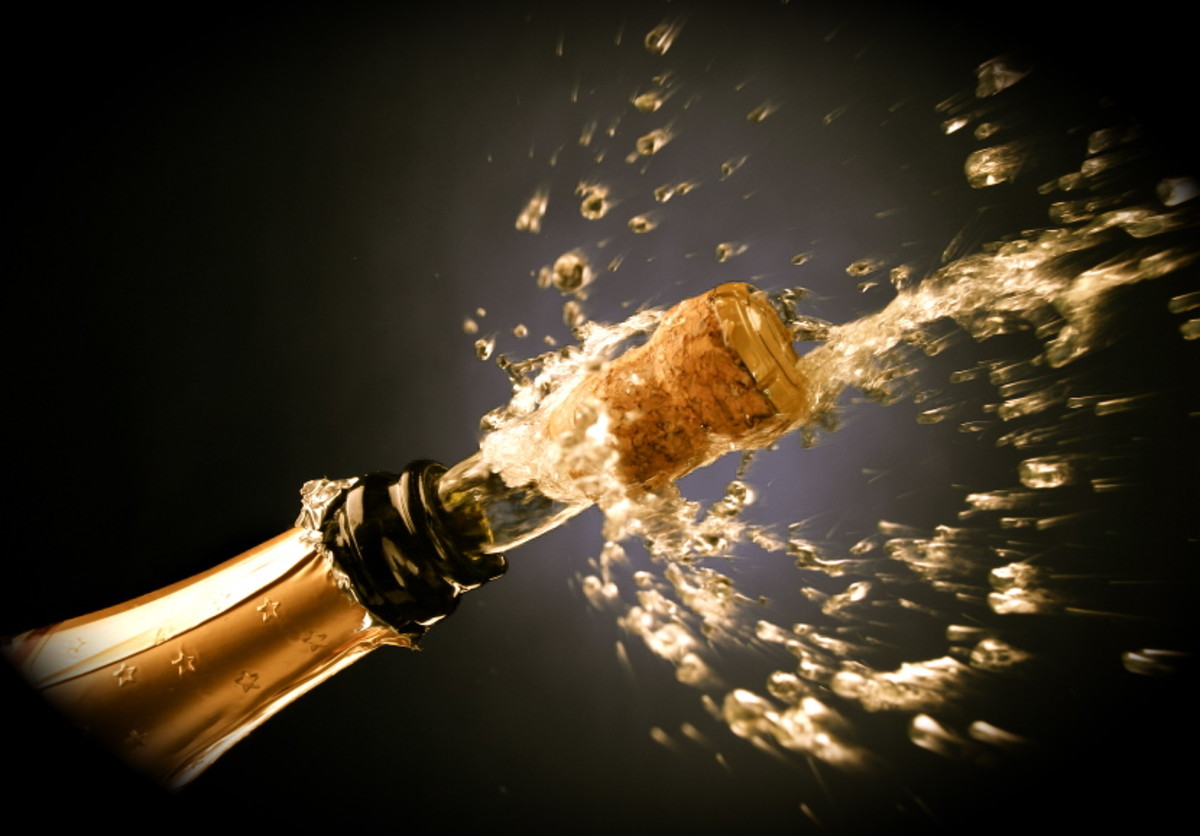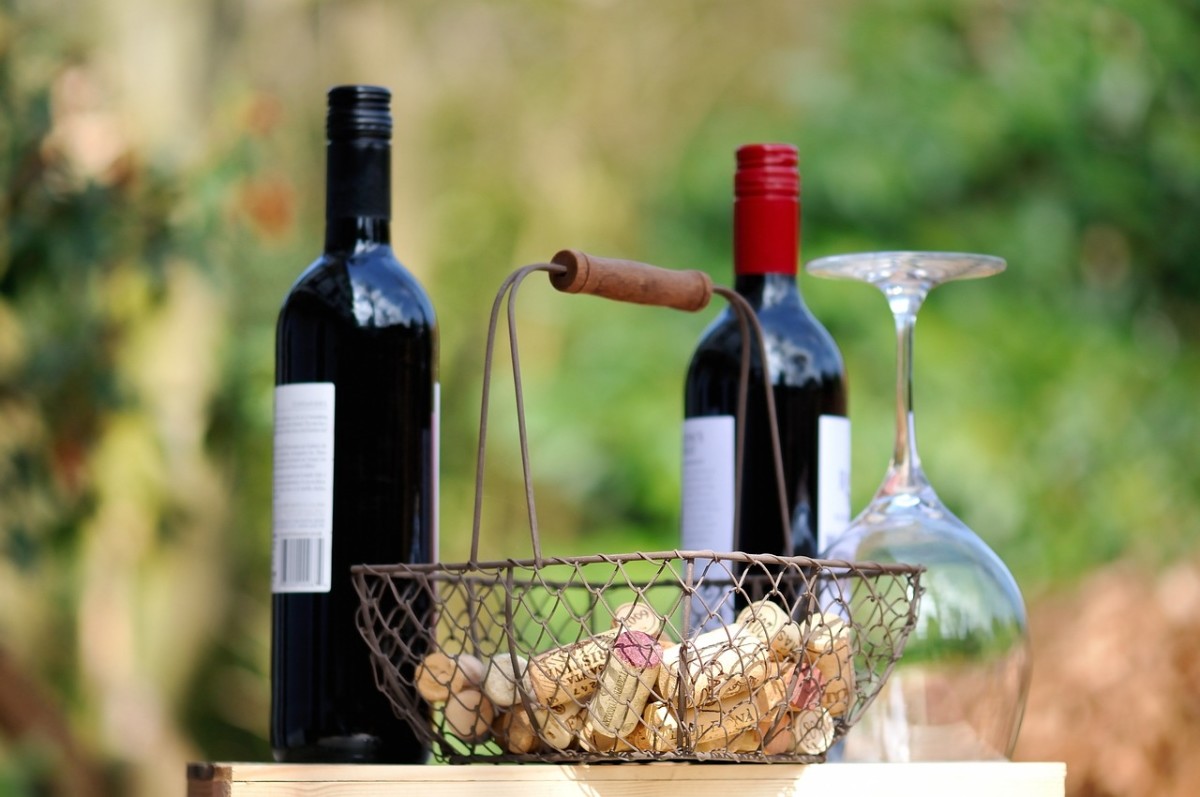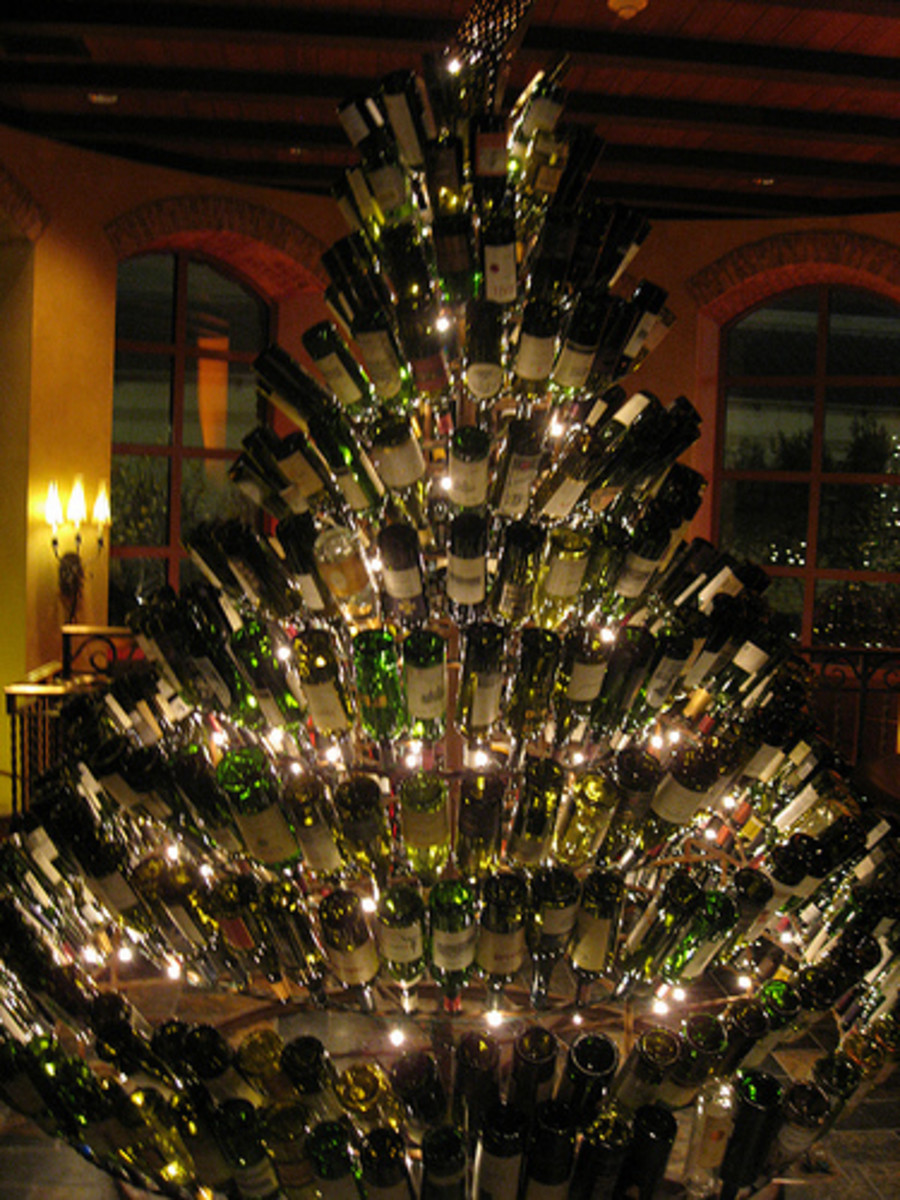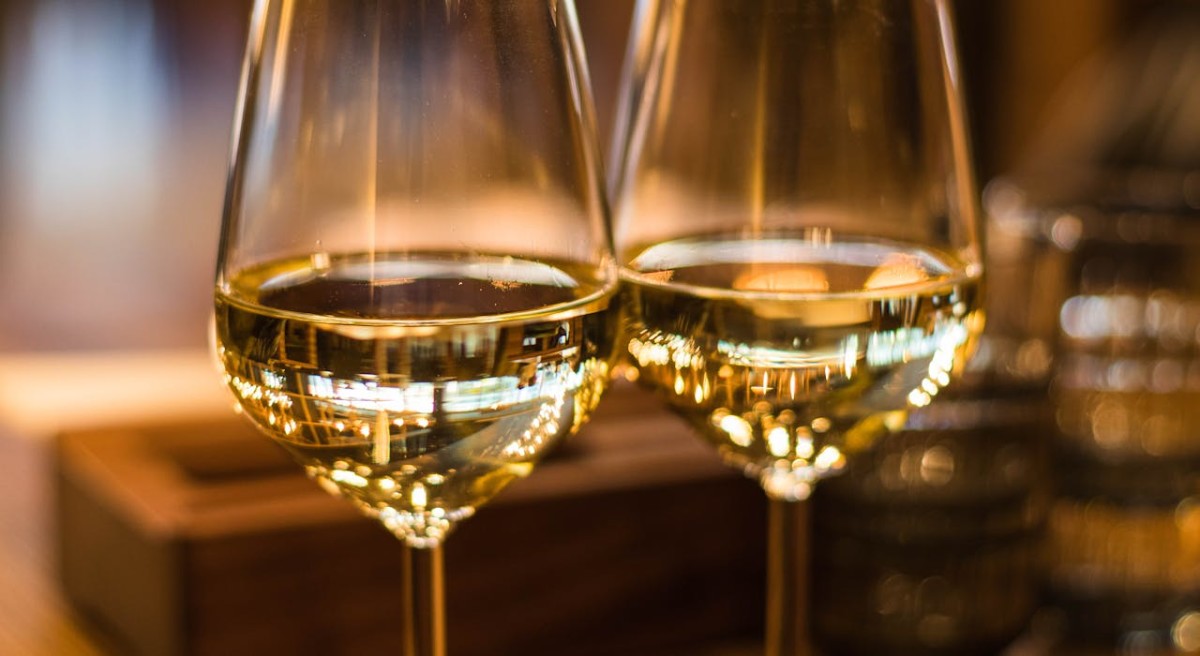French Wine Label Language
This article on French wine label language is a complementary part of my Understanding European Wine Labels article that will teach you to understand the meanings of foreign terms on European wine labels.
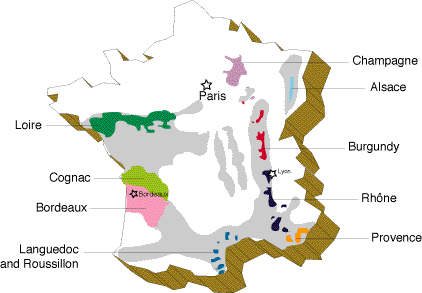
French Wine Label Definitions
Année: Literally year; refers to the vintage.
Appellation d’Origine Contrôlée: Top official classification, usually referred to as AOC, immediately above Vin Délimité de Qualité Supérieure.
Barriques: Small oak barrels of approx. 225 liters capacity.
Blanc: White.
Blanc de Blancs: Literally white of whites; often used for sparkling white wines made from white grapes.
Blanc de Noirs: Literally white of blacks; often used for sparkling white wines made from black grapes. In the New World, wines usually have a tinge of pink, often similar to fully-fledged rosé, but a classic blanc de noirs should be naturally as white as possible.
Brut: Reserved for sparkling wines; literally means raw or bone dry. In practice there is always some sweetness to them.
Cave coopérative: Cooperative cellars for members to take their grapes at harvest, so that the wines produced can be marketed under one label. Often blended products, but top-of-the-range wines may be from very specific locations. A lot of cooperative wines are ordinary, but the best usually offer exceptional value.
Cépage: Means grape variety, used on the label immediately prior to the variety, so “Cépage Mauzac” means that the wine is made from the Mauzac grape variety.
Châtaignier: Chestnut, sometimes used to make barrels.
Château: Literally castle or mansion, but many wine cellars claiming this description are merely modest one-story villas, some are custom-built cuveries, a few are tin sheds. The legal connotation of a château-bottled wine is the same as for any domaine-bottled wine.
Chêne: Oak, commonly used to make barrels.
Clairet: Wine somewhere between a dark rosé and a light red wine.
Climat: A single plot of land with its own name, located within a specific vineyard.
Clos: Climat, either enclosed by walls, or once enclosed.
Côte, côtes: Literally slope or hillside; in practice often no different from Coteau, Coteaux.
Coteau, Coteaux: Literally slope or hillside; in practice often no different from Côte, Côtes.
Crémant: Traditionally a Champagne with a low-pressure and a soft, creamy mousse, now phased out in Champagne as part of the bargain struck with other French sparkling wines that have agreed to drop the term méthode champenoise. In return they have been exclusively permitted to use this old Champagne term to create their own appellations, such as Crémant de Bourgogne, Crémant d’Alsace, etc.
Cru or Crû: Literally a growth or plot of land, implies that it has been officially designated in some way, such as a cru bourgeois, cru classé, premier cru, or grand cru.
Cru Bourgeois: An officially designated growth below cru classé in the Médoc.
Cru Classé: An officially classified vineyard in the Médoc and Provence.
Cuve: A vat, cuve, not to be confused with cuvée.
Cuve Close: A sparkling wine that has undergone second fermentation in a vat, cuve close is synonymous with Charmat or Tank Method.
Cuvée: Originally the wine of one cuve, now refers to a specific blend or product which, will be from several vats, this term most commonly used in Champagne.
Dégorgé or dégorgement: on some sparkling wines, this will be followed by the date when the wine was disgorged of the yeast sediment built up during its second fermentation in bottle.
Demi-muid: A large oval barrel, made of oak, with a capacity of 300 liters or 600 liters in Champagne.
Demi-sec: Literally semi-dry, but tastes quite sweet.
Domaine: can consist of vineyards scattered over several appellations in one region. The wine in the bottle must come from the domaine indicated on the label.
Doux: A sweet wine.
Encépagement: The proportion of grape varieties in a blend or cuvée.
Elevage par X or Eleveur X: Refers to the traditional function of a négociant (X), who has not made the wine initially, but purchased it, after which the négociant will age, possibly blend, bottle, and sell the wine.
Elevée en …: Aged in ….
Elevée et mise en bouteille par X: aged and bottled by X, but not or only partly produced by X.
Foudre: A large wooden cask or vat.
Fûts: Barrels.
Grand cru: Literally great growth; the wine has come from a great vineyard in regions such as Burgundy and Alsace. Its use is strictly controlled. In Champagne, grand cru is much less meaningful, as it applies to entire villages, where lesser vineyards also exist.
Grand vin: when used properly in Bordeaux, grand vin applies to the main wine sold under the château’s famous name, and will have been produced from only the finest barrels.
Lie: French for lees: sur lie refers to a wine kept in contact with its lees.
Lieu-dit: Commonly used for a wine from a specific named site.
Médaille Medal: médaille d’or is gold medal, médaille d’argent is silver, and médaille de bronze is bronze.
Méthode Ancestrale: sweet sparkling wine from Limoux, produced by a variant of méthode rurale, a process that involves no secondary fermentation, the wine bottled before the first alcoholic fermentation has finished.
Méthode Classique: legal term for a sparkling wine made by the méthode champenoise.
Méthode Champenoise: expressly reserved for Champagne, the producers of which seldom bother to use it. A process whereby an effervescence is produced through a secondary fermentation in the same bottle it is sold in.
Méthode Deuxième Fermentation, Traditionnelle, Méthode Traditionnelle Classique: Legal terms for a sparkling wine made by the méthode champenoise.
Millésime, millésimé: Refers to the vintage year.
Mis en bouteille au domaine or à la propriété or le château: Bottled at the domaine / property / château indicated on the label, the wine is from grapes grown there.
Mis en bouteille par …: Bottled by....
Mistelle: Fresh grape juice muted with alcohol before fermentation.
Moelleux: Literally soft or smooth; a rich, medium-sweet style in most French areas, except the Loire, where it indicates a truly rich, sweet botrytis wine, distinguishing it from demi-sec. Now obligatory in Alsace for wines that have a minimum residual sugar of 12g/l.
Monopole: the wine comes from a single vineyard usually a grand cru under the sole ownership of the wine producer in question. The exception is Champagne Heidsieck & Co. Monopole, which is just a trading name.
Mousse: The effervescence of a sparkling wine.
Mousseux: Sparkling, found only on cheap fizz.
Négociant: Literally a trader or merchant; used by wine producers whose business depends on buying in raw materials.
Négociant-éleveur: Wine firm that buys in ready-made wines for élevage.
Négociant-Propriétaire: A négociant who owns vineyards and offers a range of its own produced wines.
Non filtré: The wine has not been filtered, thus liable to drop a sediment much earlier than most other wines, and should always be decanted.
Oeil-de-perdrix: Literally partridge eye; refers to a rosé-colored wine.
Perlant: Very slightly sparkling, less so than pétillant.
Pétillance, pétillant: A wine with enough carbonic gas to create a light sparkle.
Premier cru: Literally a first growth, the status is beneath grand cru but only of relevance in areas where the term is controlled, such as Burgundy and Alsace. In Champagne, much less meaningful, because it applies to entire villages in which much lesser vineyards also exist.
Produit: Product
Propriétaire-Récoltant: A grower-producer whose wine will be made exclusively from his own property.
Récolte: Refers to the vintage year.
Réserve: Ubiquitous and meaningless.
Rosé: Pink.
Rouge: Red.
Rubis: seen on rosé wines, on darker styles.
Saignée: A rosé wine produced by “bleeding” off surplus liquid from either the press or the fermenting vat.
Sec: Dry, but in a sparkling wine this will have more sweetness than a brut.
Sélection de Grains Nobles: A rare, intensely sweet, wine in Alsace made from selected botrytized grapes.
Sélection par X: Selected, but not produced or bottled by X.
Supérieur: part of an appellation this refers not to a superior quality but a superior alcoholic strength.
Sur lie: Refers to wines, usually Muscadets, kept on their lees not racked or filtered prior to bottling. This enhances the fruit of the normally bland Melon de Bourgogne grape used in Muscadet.
Tête de cuvée: strongly suggests that a wine has been produced exclusively from the first flow of juice during the pressing, which is the highest in quality with the most acids, sugars, and minerals.
Tonneau: A large barrel, traditionally four times the size of a barrique.
Trie: the harvesting of selected overripe or botrytized grapes by numerous sweeps through the vineyard.
Union Coopérative: A regional collective of local cooperatives.
Vendange tardive: Late harvest; implies a sweet wine.
Vieilles Vignes: from old vines, lower yields and higher concentration, most reputable producers would not use the term unless the vines are at least 35 to 50 years old.
Vieillissement: Aging.
Vigneron: Literally a vineyard worker, often used to denote the owner-winemaker.
Vigne: Vine.
Vignoble: Vineyard.
Vin d’une nuit: A rosé or very pale red wine that is allowed contact with its grapeskins for one night only.
Vin de glace: The French equivalent of Eiswein or Ice Wine.
Vin: Wine.
Vin de l’Année: vin primeur.
Vin de liqueur: A fortified wine muted with alcohol before fermentation can begin.
Vin de paille: Literally straw wine, a complex sweet wine produced by leaving late-picked grapes to dry and shrivel while hanging from rafters over straw mats.
Vin de Pays: Official classification, usually precedes the actual vin de pays name such as Vin de Pays des Collines de la Moure, Vin de pays is below VDQS and above vin de table.
Vin de Table: Lowest official classification, below vin de table.
Vin Délimité de Qualité Supérieure: Official classification, commonly referred to as VDQS, below AOC and above vin de pays.
Vin Doux Naturel: A fortified wine, such as Muscat de Beaumes de Venise, muted during fermentation, after it achieving between 5 and 8 percent alcohol.
Vin gris: A delicate, pale version of rosé.
Vin jaune: The famous “yellow wine” of the Jura derives its name from the honey-gold color that results from its deliberate oxidation beneath a sherry-like flor. The resulting vin jaune is similar to an aged fino sherry, although not fortified.
Vin Mousseux: sparkling wine without any connotation of quality, but because all fine sparkling wines in France utilize other terms, it should be taken to mean a cheap, low-quality fizz.
Vin Nouveau: vin primeur.
Vin primeur: A young wine sold within weeks of the harvest, meant to be drunk within the year. Beaujolais Primeur is the most commonly known example of this type of wine, but other AOCs are sold in this fashion, as are all vins de pays.

